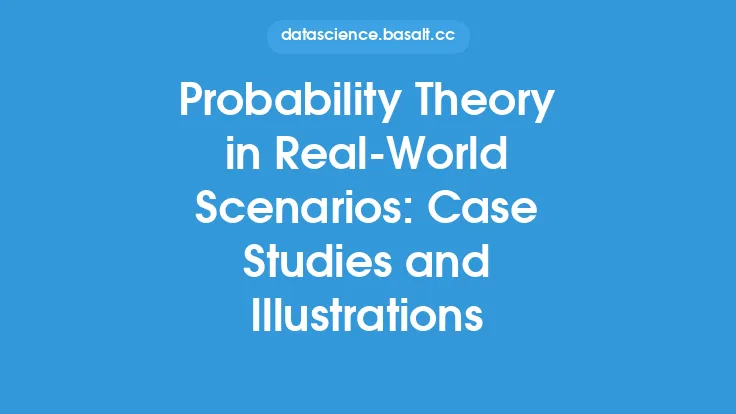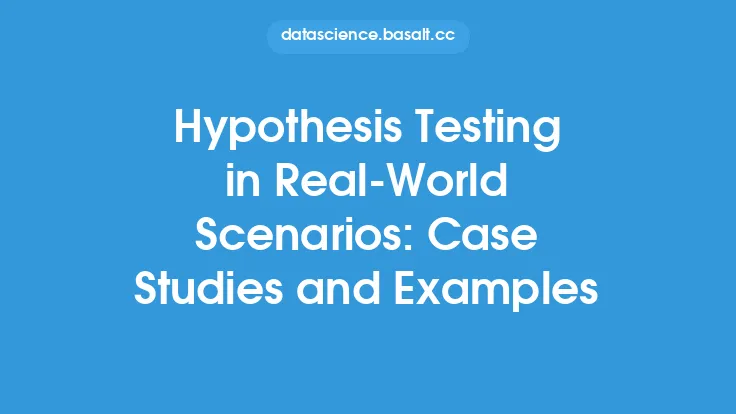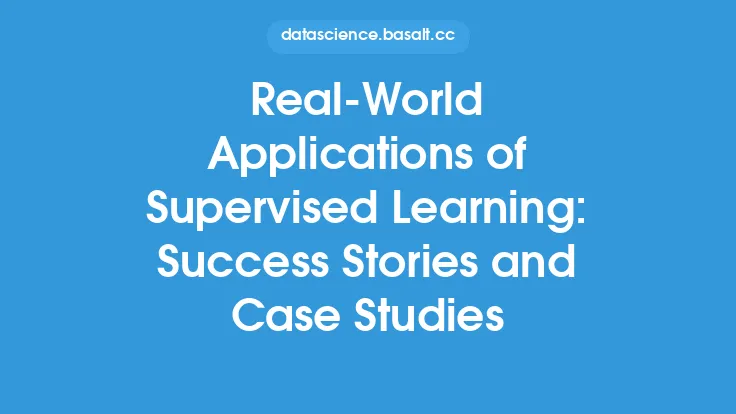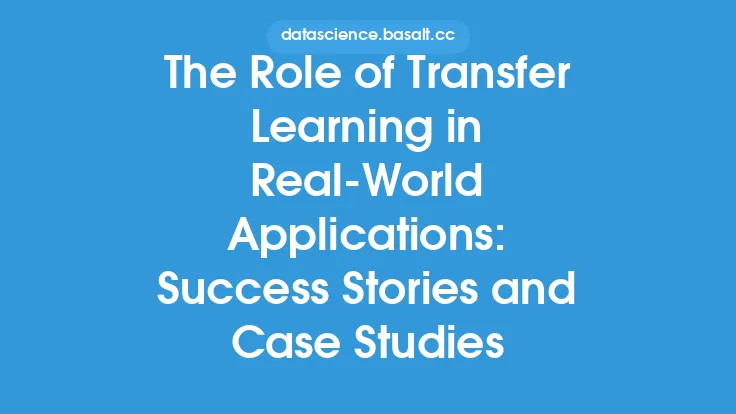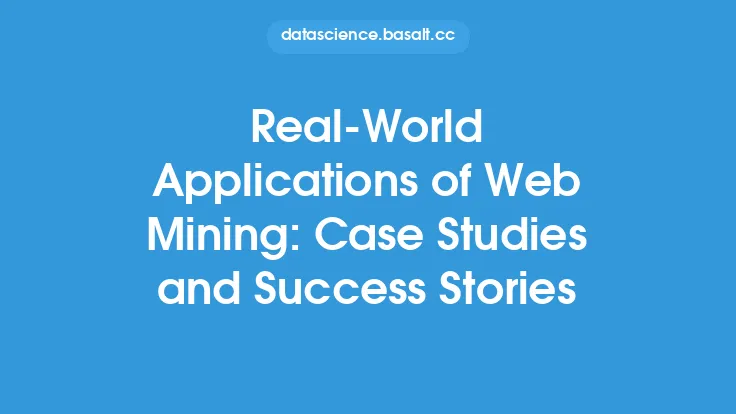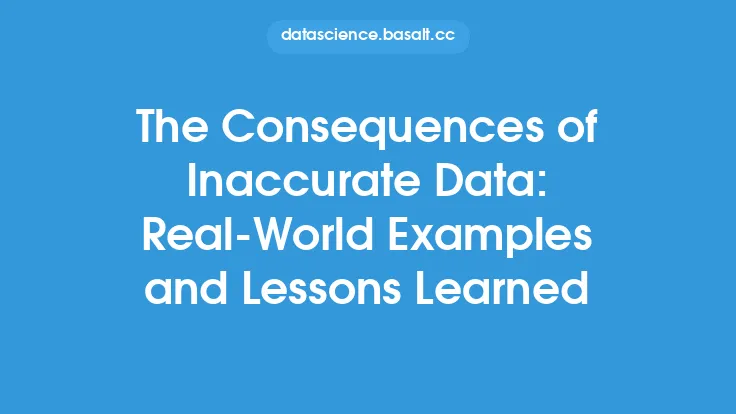Statistical inference is a crucial aspect of statistics that involves using sample data to make conclusions about a population. It provides a framework for making informed decisions based on data analysis. In this article, we will explore how statistical inference can be applied to real-world problems through case studies and examples.
Introduction to Statistical Inference in Real-World Scenarios
Statistical inference is widely used in various fields, including medicine, social sciences, business, and engineering. It helps researchers and analysts to understand the underlying patterns and relationships in data, and to make predictions about future outcomes. Statistical inference involves using statistical techniques, such as hypothesis testing and confidence intervals, to analyze sample data and make inferences about a population. For instance, in medicine, statistical inference can be used to determine the effectiveness of a new drug or treatment. In business, it can be used to analyze customer behavior and preferences.
Case Study: Analyzing Customer Behavior
A company that sells products online wants to know whether a new marketing campaign is effective in increasing sales. The company collects data on the number of sales before and after the campaign, and uses statistical inference to analyze the data. The company uses a hypothesis test to determine whether the increase in sales is statistically significant. The null hypothesis is that the marketing campaign has no effect on sales, while the alternative hypothesis is that the campaign increases sales. The company calculates the test statistic and p-value, and finds that the p-value is less than 0.05, indicating that the null hypothesis can be rejected. This means that the marketing campaign is likely to be effective in increasing sales.
Example: Using Confidence Intervals to Estimate Population Parameters
A researcher wants to estimate the average height of a population of adults. The researcher collects a random sample of 100 adults and calculates the average height to be 175 cm. The researcher uses a confidence interval to estimate the population average height. The confidence interval is calculated as (172.5, 177.5), which means that the researcher is 95% confident that the population average height lies between 172.5 cm and 177.5 cm. This provides a range of values within which the true population average height is likely to lie.
Statistical Inference in Medicine: Clinical Trials
Statistical inference is widely used in medicine to analyze the results of clinical trials. Clinical trials involve comparing the outcomes of a new treatment or drug with a control group. Statistical inference is used to determine whether the new treatment is effective in improving patient outcomes. For example, a clinical trial may involve comparing the survival rates of patients with a new cancer treatment with a control group. The researchers use statistical inference to analyze the data and determine whether the new treatment is statistically significant in improving survival rates.
Using Regression Analysis for Predictive Modeling
Regression analysis is a statistical technique that is widely used for predictive modeling. It involves modeling the relationship between a dependent variable and one or more independent variables. Statistical inference is used to analyze the regression model and determine whether the independent variables are statistically significant in predicting the dependent variable. For instance, a company may use regression analysis to model the relationship between sales and advertising expenditure. The company uses statistical inference to analyze the regression model and determine whether advertising expenditure is statistically significant in predicting sales.
Bayesian Inference: A Different Approach to Statistical Inference
Bayesian inference is a different approach to statistical inference that involves using prior knowledge and uncertainty to make inferences about a population. It involves updating the prior distribution with new data to obtain a posterior distribution. Bayesian inference is widely used in machine learning and artificial intelligence. For example, a company may use Bayesian inference to analyze customer behavior and preferences. The company uses prior knowledge about customer behavior and updates it with new data to obtain a posterior distribution.
Common Challenges and Limitations of Statistical Inference
Statistical inference is not without its challenges and limitations. One of the common challenges is the problem of sampling bias, which occurs when the sample is not representative of the population. Another challenge is the problem of model misspecification, which occurs when the statistical model is not correctly specified. Statistical inference also assumes that the data is randomly sampled from the population, which may not always be the case. Additionally, statistical inference can be sensitive to outliers and missing data.
Best Practices for Applying Statistical Inference
To apply statistical inference effectively, it is essential to follow best practices. One of the best practices is to ensure that the sample is randomly selected from the population. Another best practice is to use appropriate statistical techniques, such as hypothesis testing and confidence intervals. It is also essential to check for assumptions, such as normality and independence, before applying statistical inference. Additionally, it is essential to interpret the results correctly and avoid common pitfalls, such as confusing statistical significance with practical significance.
Conclusion
Statistical inference is a powerful tool for making informed decisions based on data analysis. It provides a framework for analyzing sample data and making inferences about a population. Through case studies and examples, we have seen how statistical inference can be applied to real-world problems in various fields, including medicine, social sciences, business, and engineering. By following best practices and being aware of the common challenges and limitations, researchers and analysts can apply statistical inference effectively to gain insights and make informed decisions.
